Financial Management: Importance, Analysis, Performance and Processes
VerifiedAdded on 2023/06/09
|12
|2552
|341
Report
AI Summary
This report provides a comprehensive overview of financial management, emphasizing its importance in organizations. It delves into the core concepts of financial management, highlighting its role in strategic planning, resource allocation, and overall business profitability. The report discusses key financial statements, including the income statement, balance sheet, and cash flow statement, explaining their significance in presenting a company's financial position and performance. Furthermore, it explores various financial ratios, such as return on assets, return on investment, profitability ratios, efficiency ratios, and liquidity ratios, and demonstrates their application in analyzing a firm's financial health. The report also provides a practical analysis using financial data to calculate and interpret these ratios. Finally, the report concludes with a discussion of processes and strategies to improve financial performance, such as cost reduction, revenue enhancement, and effective budgeting, offering valuable insights for business managers and students alike.
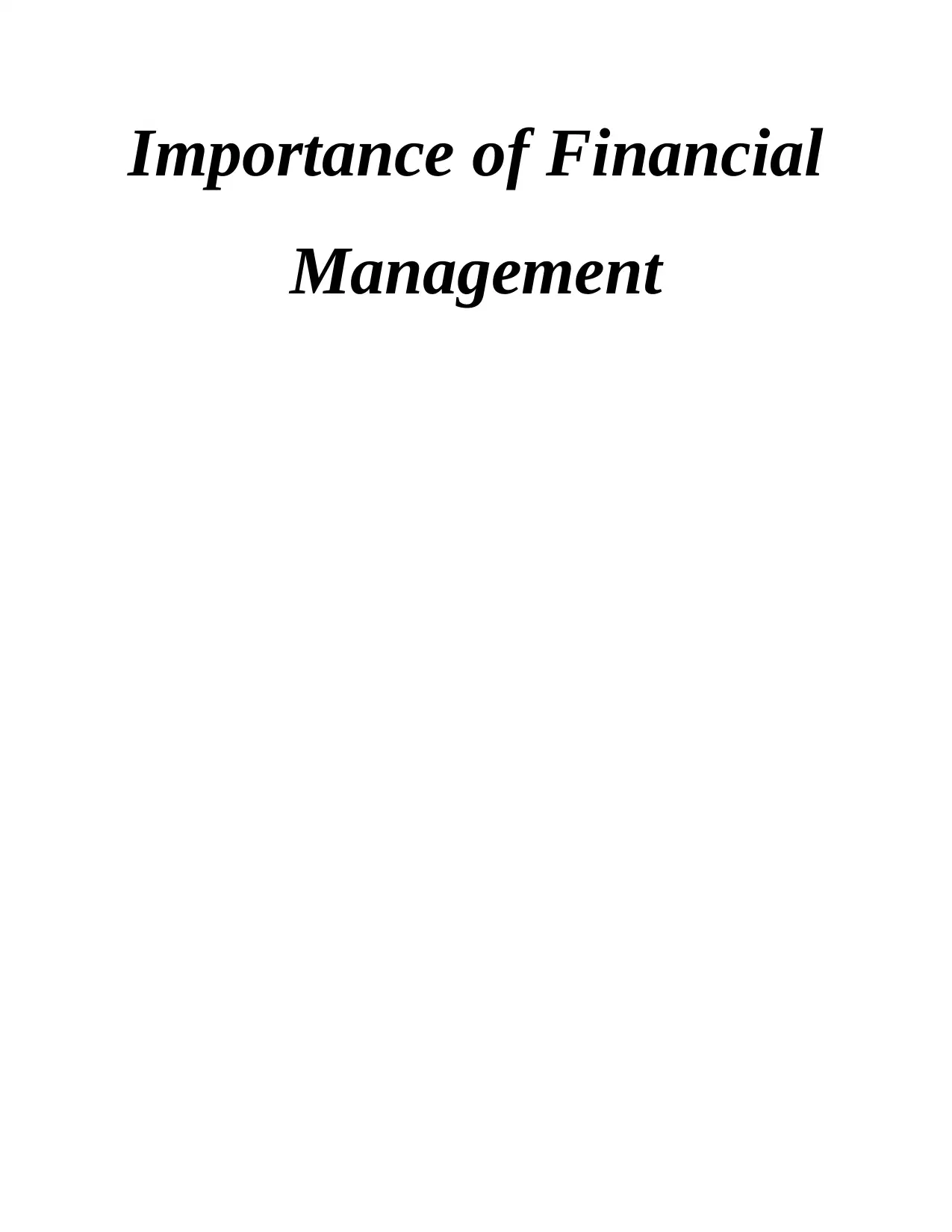
Importance of Financial
Management
Management
Paraphrase This Document
Need a fresh take? Get an instant paraphrase of this document with our AI Paraphraser
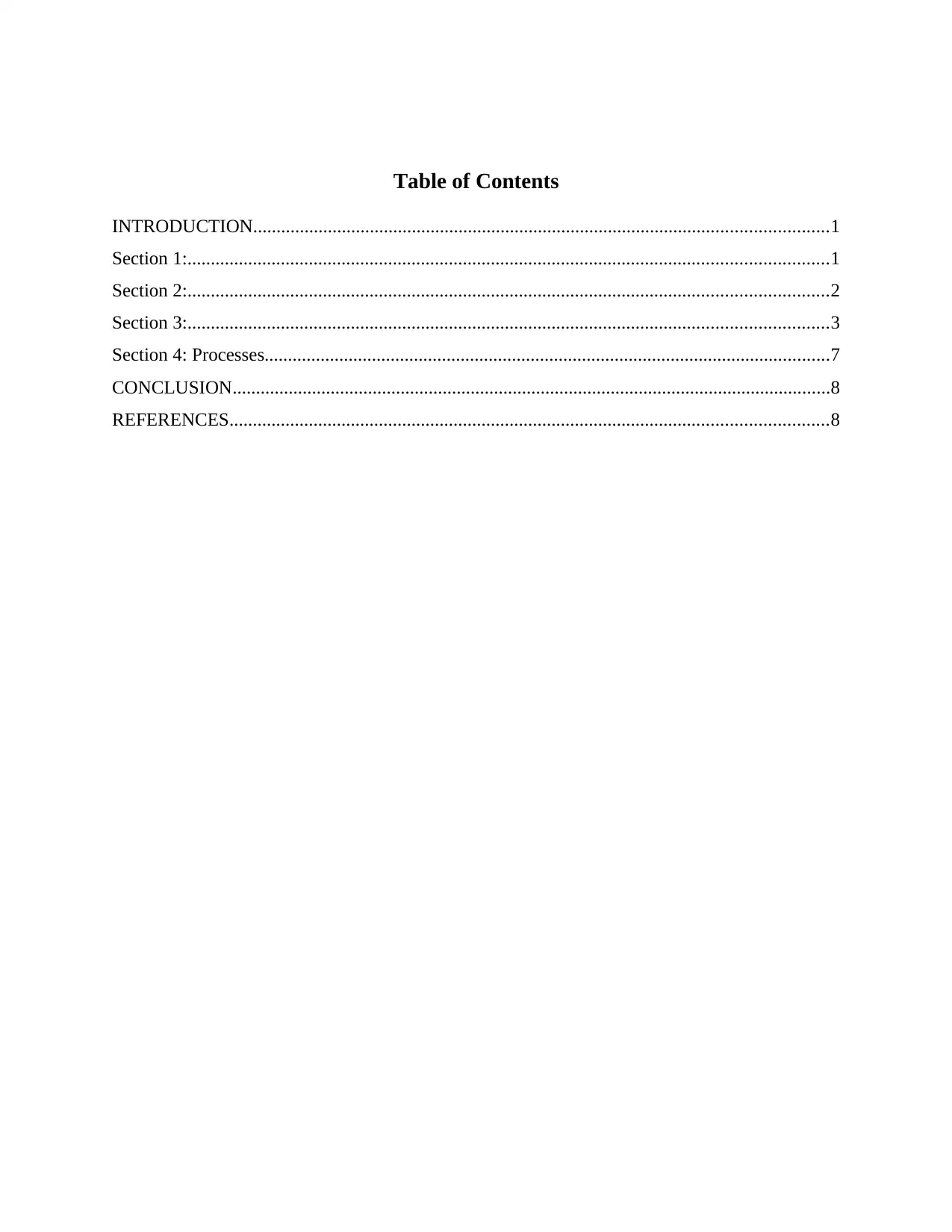
Table of Contents
INTRODUCTION...........................................................................................................................1
Section 1:.........................................................................................................................................1
Section 2:.........................................................................................................................................2
Section 3:.........................................................................................................................................3
Section 4: Processes.........................................................................................................................7
CONCLUSION................................................................................................................................8
REFERENCES................................................................................................................................8
INTRODUCTION...........................................................................................................................1
Section 1:.........................................................................................................................................1
Section 2:.........................................................................................................................................2
Section 3:.........................................................................................................................................3
Section 4: Processes.........................................................................................................................7
CONCLUSION................................................................................................................................8
REFERENCES................................................................................................................................8
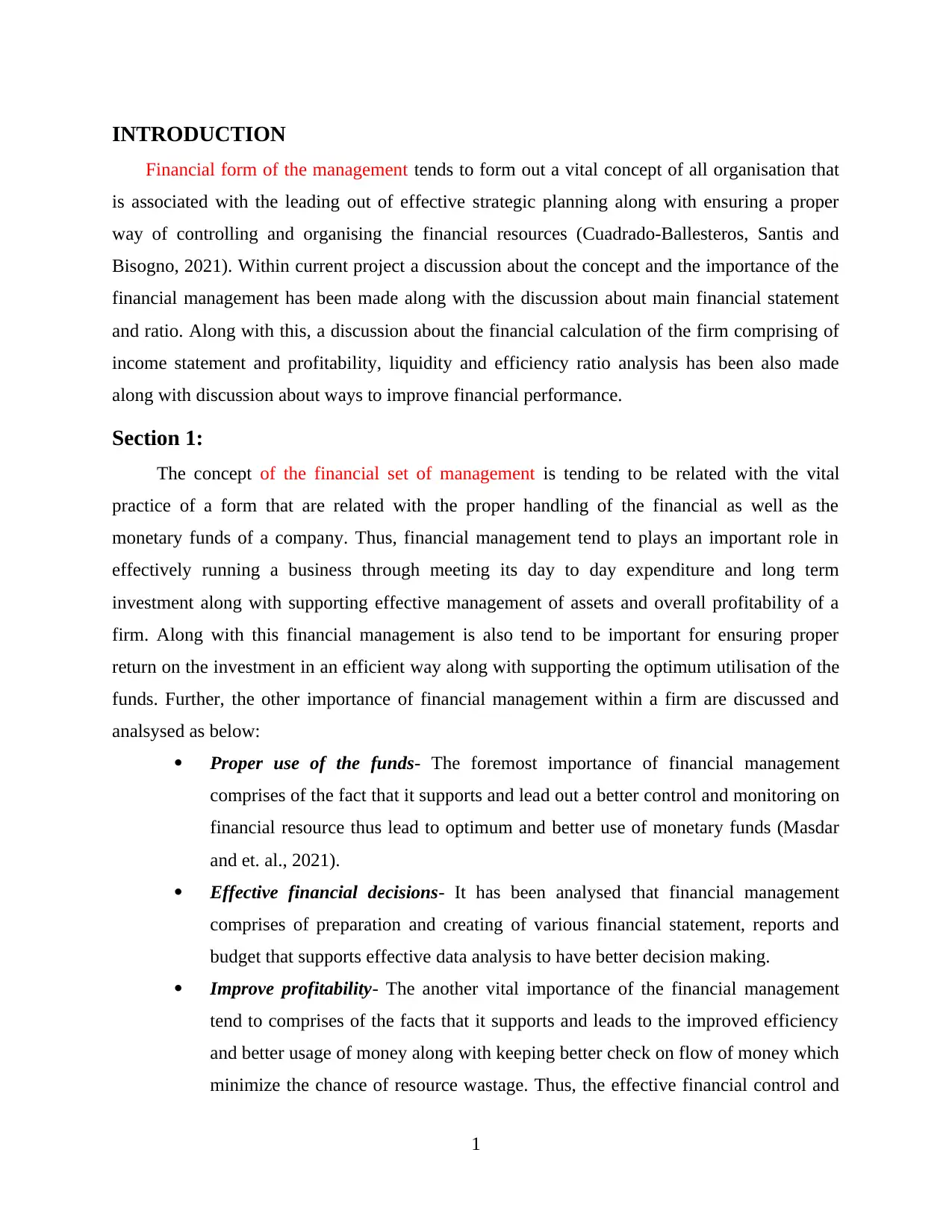
INTRODUCTION
Financial form of the management tends to form out a vital concept of all organisation that
is associated with the leading out of effective strategic planning along with ensuring a proper
way of controlling and organising the financial resources (Cuadrado-Ballesteros, Santis and
Bisogno, 2021). Within current project a discussion about the concept and the importance of the
financial management has been made along with the discussion about main financial statement
and ratio. Along with this, a discussion about the financial calculation of the firm comprising of
income statement and profitability, liquidity and efficiency ratio analysis has been also made
along with discussion about ways to improve financial performance.
Section 1:
The concept of the financial set of management is tending to be related with the vital
practice of a form that are related with the proper handling of the financial as well as the
monetary funds of a company. Thus, financial management tend to plays an important role in
effectively running a business through meeting its day to day expenditure and long term
investment along with supporting effective management of assets and overall profitability of a
firm. Along with this financial management is also tend to be important for ensuring proper
return on the investment in an efficient way along with supporting the optimum utilisation of the
funds. Further, the other importance of financial management within a firm are discussed and
analsysed as below:
Proper use of the funds- The foremost importance of financial management
comprises of the fact that it supports and lead out a better control and monitoring on
financial resource thus lead to optimum and better use of monetary funds (Masdar
and et. al., 2021).
Effective financial decisions- It has been analysed that financial management
comprises of preparation and creating of various financial statement, reports and
budget that supports effective data analysis to have better decision making.
Improve profitability- The another vital importance of the financial management
tend to comprises of the facts that it supports and leads to the improved efficiency
and better usage of money along with keeping better check on flow of money which
minimize the chance of resource wastage. Thus, the effective financial control and
1
Financial form of the management tends to form out a vital concept of all organisation that
is associated with the leading out of effective strategic planning along with ensuring a proper
way of controlling and organising the financial resources (Cuadrado-Ballesteros, Santis and
Bisogno, 2021). Within current project a discussion about the concept and the importance of the
financial management has been made along with the discussion about main financial statement
and ratio. Along with this, a discussion about the financial calculation of the firm comprising of
income statement and profitability, liquidity and efficiency ratio analysis has been also made
along with discussion about ways to improve financial performance.
Section 1:
The concept of the financial set of management is tending to be related with the vital
practice of a form that are related with the proper handling of the financial as well as the
monetary funds of a company. Thus, financial management tend to plays an important role in
effectively running a business through meeting its day to day expenditure and long term
investment along with supporting effective management of assets and overall profitability of a
firm. Along with this financial management is also tend to be important for ensuring proper
return on the investment in an efficient way along with supporting the optimum utilisation of the
funds. Further, the other importance of financial management within a firm are discussed and
analsysed as below:
Proper use of the funds- The foremost importance of financial management
comprises of the fact that it supports and lead out a better control and monitoring on
financial resource thus lead to optimum and better use of monetary funds (Masdar
and et. al., 2021).
Effective financial decisions- It has been analysed that financial management
comprises of preparation and creating of various financial statement, reports and
budget that supports effective data analysis to have better decision making.
Improve profitability- The another vital importance of the financial management
tend to comprises of the facts that it supports and leads to the improved efficiency
and better usage of money along with keeping better check on flow of money which
minimize the chance of resource wastage. Thus, the effective financial control and
1
⊘ This is a preview!⊘
Do you want full access?
Subscribe today to unlock all pages.

Trusted by 1+ million students worldwide
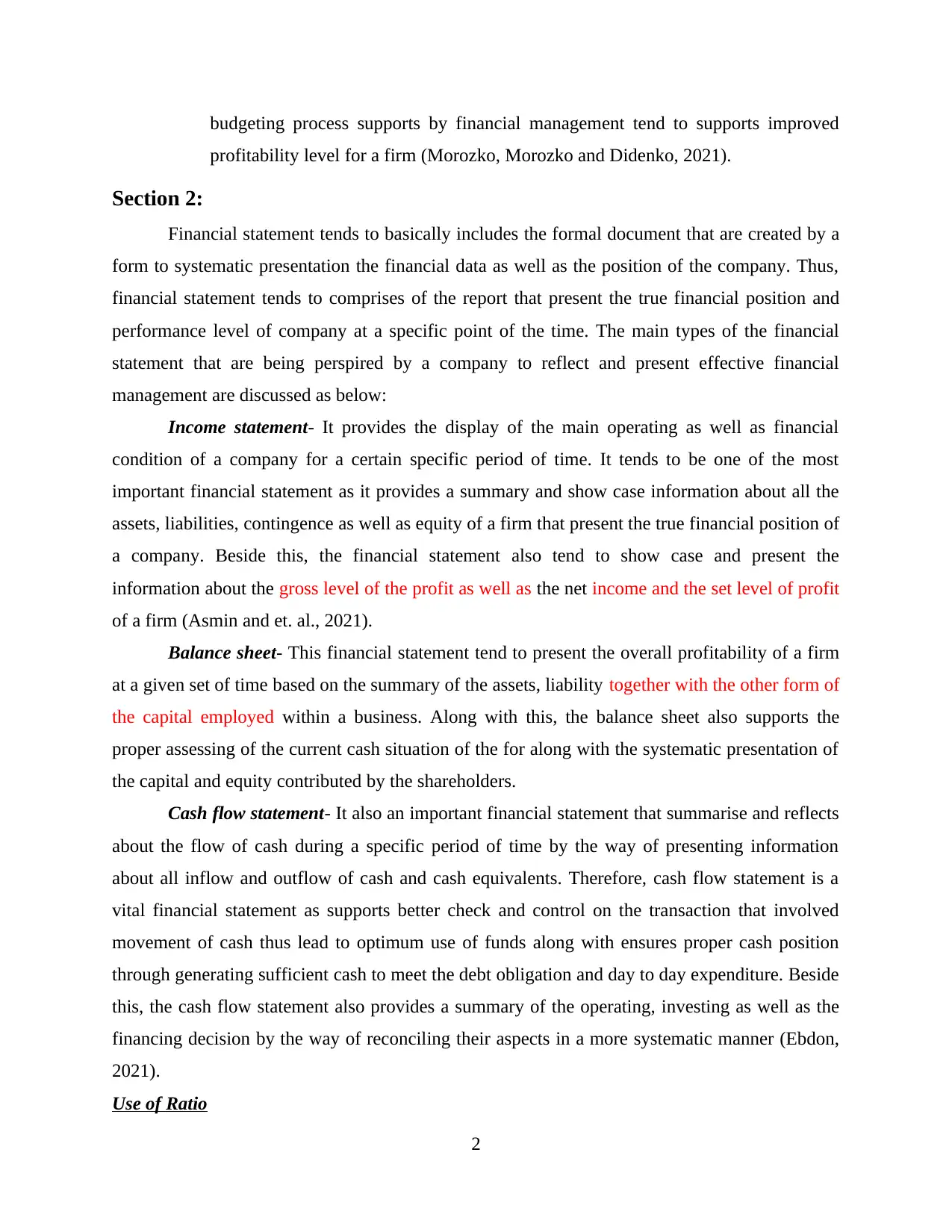
budgeting process supports by financial management tend to supports improved
profitability level for a firm (Morozko, Morozko and Didenko, 2021).
Section 2:
Financial statement tends to basically includes the formal document that are created by a
form to systematic presentation the financial data as well as the position of the company. Thus,
financial statement tends to comprises of the report that present the true financial position and
performance level of company at a specific point of the time. The main types of the financial
statement that are being perspired by a company to reflect and present effective financial
management are discussed as below:
Income statement- It provides the display of the main operating as well as financial
condition of a company for a certain specific period of time. It tends to be one of the most
important financial statement as it provides a summary and show case information about all the
assets, liabilities, contingence as well as equity of a firm that present the true financial position of
a company. Beside this, the financial statement also tend to show case and present the
information about the gross level of the profit as well as the net income and the set level of profit
of a firm (Asmin and et. al., 2021).
Balance sheet- This financial statement tend to present the overall profitability of a firm
at a given set of time based on the summary of the assets, liability together with the other form of
the capital employed within a business. Along with this, the balance sheet also supports the
proper assessing of the current cash situation of the for along with the systematic presentation of
the capital and equity contributed by the shareholders.
Cash flow statement- It also an important financial statement that summarise and reflects
about the flow of cash during a specific period of time by the way of presenting information
about all inflow and outflow of cash and cash equivalents. Therefore, cash flow statement is a
vital financial statement as supports better check and control on the transaction that involved
movement of cash thus lead to optimum use of funds along with ensures proper cash position
through generating sufficient cash to meet the debt obligation and day to day expenditure. Beside
this, the cash flow statement also provides a summary of the operating, investing as well as the
financing decision by the way of reconciling their aspects in a more systematic manner (Ebdon,
2021).
Use of Ratio
2
profitability level for a firm (Morozko, Morozko and Didenko, 2021).
Section 2:
Financial statement tends to basically includes the formal document that are created by a
form to systematic presentation the financial data as well as the position of the company. Thus,
financial statement tends to comprises of the report that present the true financial position and
performance level of company at a specific point of the time. The main types of the financial
statement that are being perspired by a company to reflect and present effective financial
management are discussed as below:
Income statement- It provides the display of the main operating as well as financial
condition of a company for a certain specific period of time. It tends to be one of the most
important financial statement as it provides a summary and show case information about all the
assets, liabilities, contingence as well as equity of a firm that present the true financial position of
a company. Beside this, the financial statement also tend to show case and present the
information about the gross level of the profit as well as the net income and the set level of profit
of a firm (Asmin and et. al., 2021).
Balance sheet- This financial statement tend to present the overall profitability of a firm
at a given set of time based on the summary of the assets, liability together with the other form of
the capital employed within a business. Along with this, the balance sheet also supports the
proper assessing of the current cash situation of the for along with the systematic presentation of
the capital and equity contributed by the shareholders.
Cash flow statement- It also an important financial statement that summarise and reflects
about the flow of cash during a specific period of time by the way of presenting information
about all inflow and outflow of cash and cash equivalents. Therefore, cash flow statement is a
vital financial statement as supports better check and control on the transaction that involved
movement of cash thus lead to optimum use of funds along with ensures proper cash position
through generating sufficient cash to meet the debt obligation and day to day expenditure. Beside
this, the cash flow statement also provides a summary of the operating, investing as well as the
financing decision by the way of reconciling their aspects in a more systematic manner (Ebdon,
2021).
Use of Ratio
2
Paraphrase This Document
Need a fresh take? Get an instant paraphrase of this document with our AI Paraphraser
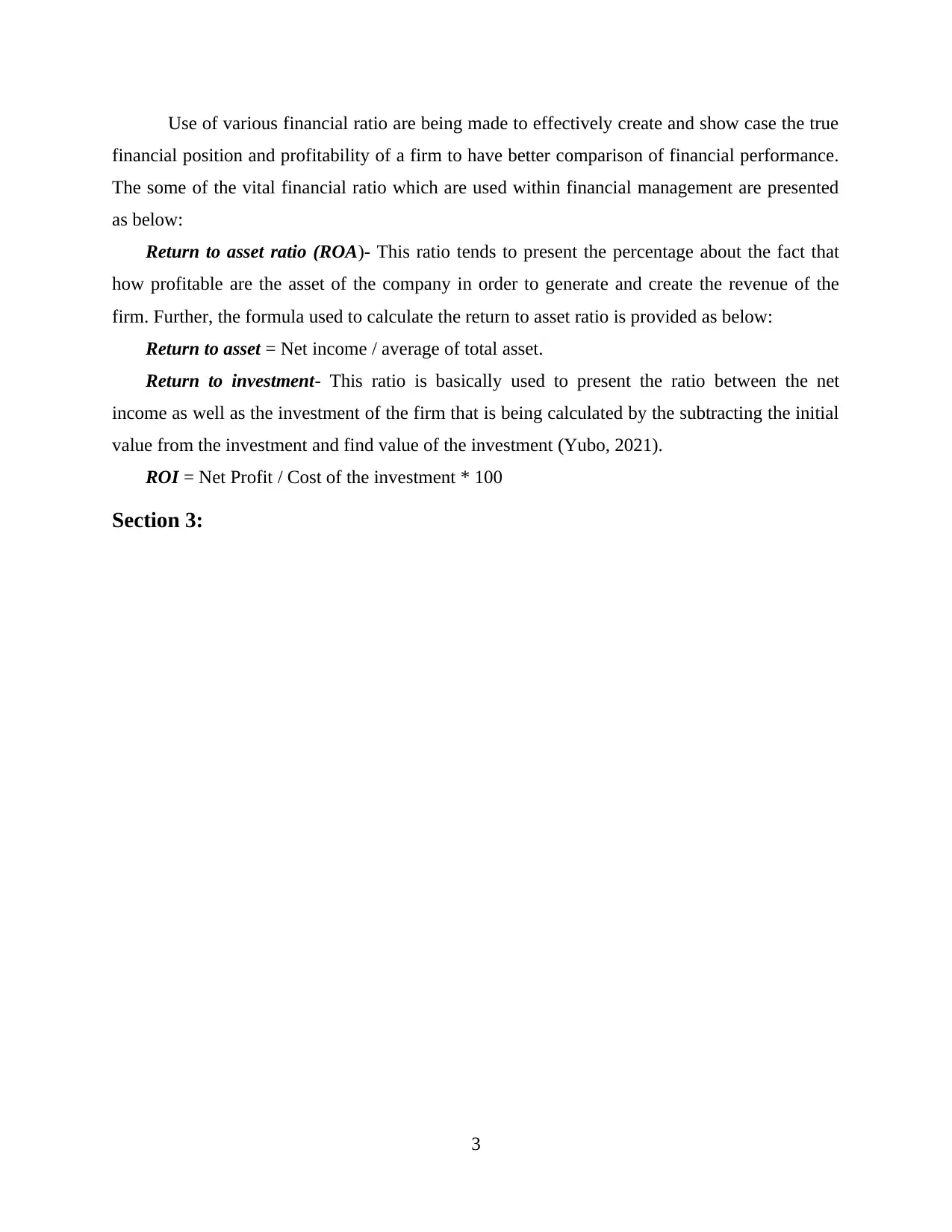
Use of various financial ratio are being made to effectively create and show case the true
financial position and profitability of a firm to have better comparison of financial performance.
The some of the vital financial ratio which are used within financial management are presented
as below:
Return to asset ratio (ROA)- This ratio tends to present the percentage about the fact that
how profitable are the asset of the company in order to generate and create the revenue of the
firm. Further, the formula used to calculate the return to asset ratio is provided as below:
Return to asset = Net income / average of total asset.
Return to investment- This ratio is basically used to present the ratio between the net
income as well as the investment of the firm that is being calculated by the subtracting the initial
value from the investment and find value of the investment (Yubo, 2021).
ROI = Net Profit / Cost of the investment * 100
Section 3:
3
financial position and profitability of a firm to have better comparison of financial performance.
The some of the vital financial ratio which are used within financial management are presented
as below:
Return to asset ratio (ROA)- This ratio tends to present the percentage about the fact that
how profitable are the asset of the company in order to generate and create the revenue of the
firm. Further, the formula used to calculate the return to asset ratio is provided as below:
Return to asset = Net income / average of total asset.
Return to investment- This ratio is basically used to present the ratio between the net
income as well as the investment of the firm that is being calculated by the subtracting the initial
value from the investment and find value of the investment (Yubo, 2021).
ROI = Net Profit / Cost of the investment * 100
Section 3:
3
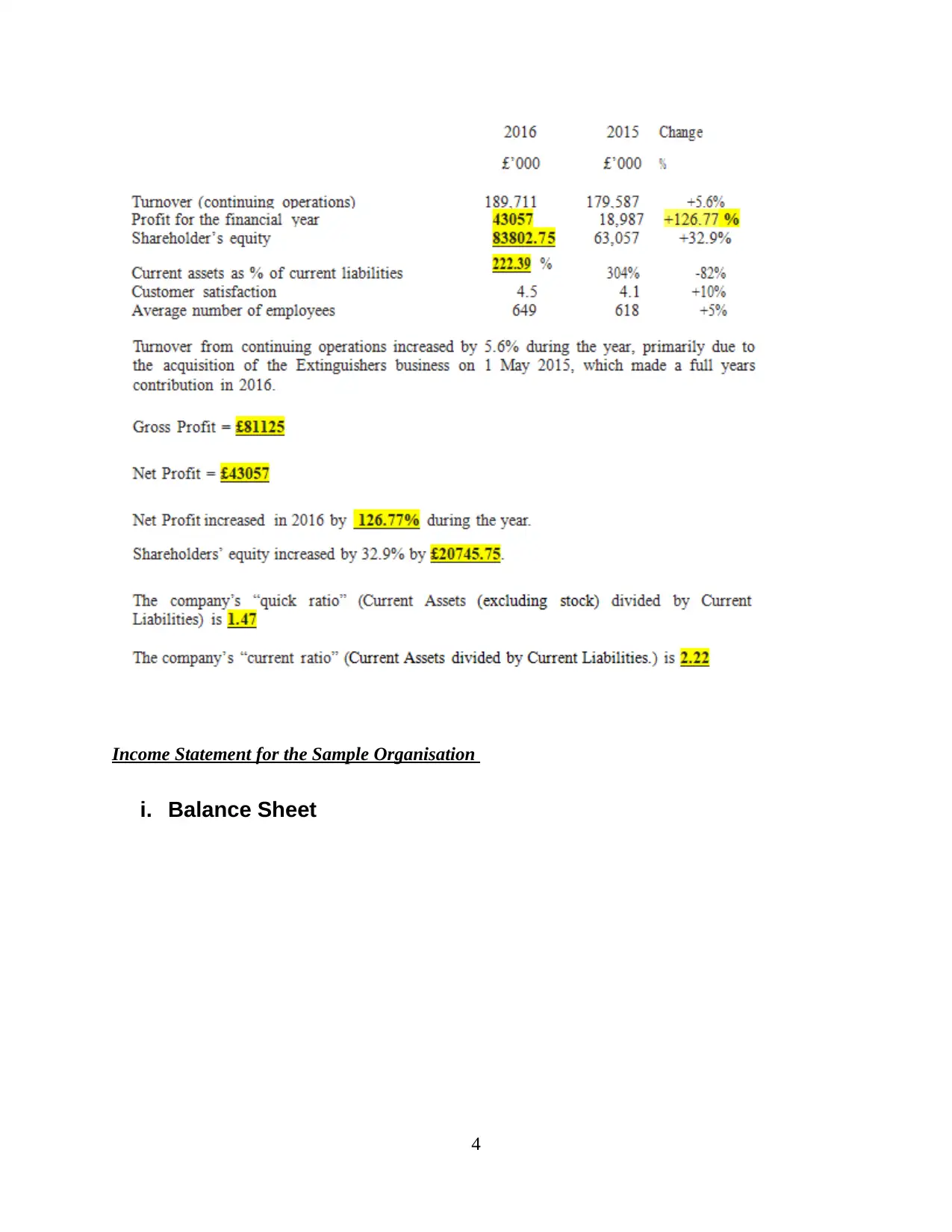
Income Statement for the Sample Organisation
i. Balance Sheet
4
i. Balance Sheet
4
⊘ This is a preview!⊘
Do you want full access?
Subscribe today to unlock all pages.

Trusted by 1+ million students worldwide
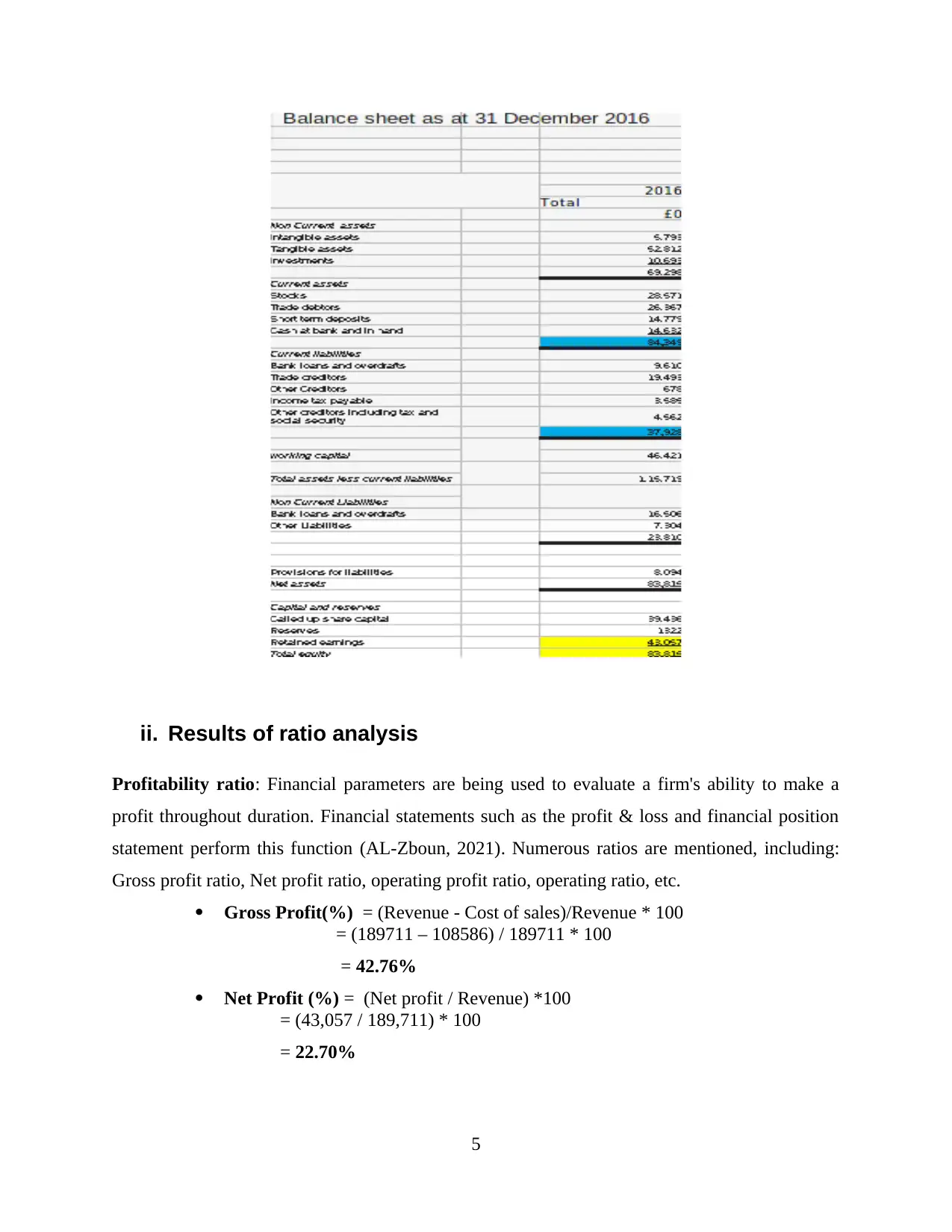
ii. Results of ratio analysis
Profitability ratio: Financial parameters are being used to evaluate a firm's ability to make a
profit throughout duration. Financial statements such as the profit & loss and financial position
statement perform this function (AL-Zboun, 2021). Numerous ratios are mentioned, including:
Gross profit ratio, Net profit ratio, operating profit ratio, operating ratio, etc.
Gross Profit(%) = (Revenue - Cost of sales)/Revenue * 100
= (189711 – 108586) / 189711 * 100
= 42.76%
Net Profit (%) = (Net profit / Revenue) *100
= (43,057 / 189,711) * 100
= 22.70%
5
Profitability ratio: Financial parameters are being used to evaluate a firm's ability to make a
profit throughout duration. Financial statements such as the profit & loss and financial position
statement perform this function (AL-Zboun, 2021). Numerous ratios are mentioned, including:
Gross profit ratio, Net profit ratio, operating profit ratio, operating ratio, etc.
Gross Profit(%) = (Revenue - Cost of sales)/Revenue * 100
= (189711 – 108586) / 189711 * 100
= 42.76%
Net Profit (%) = (Net profit / Revenue) *100
= (43,057 / 189,711) * 100
= 22.70%
5
Paraphrase This Document
Need a fresh take? Get an instant paraphrase of this document with our AI Paraphraser
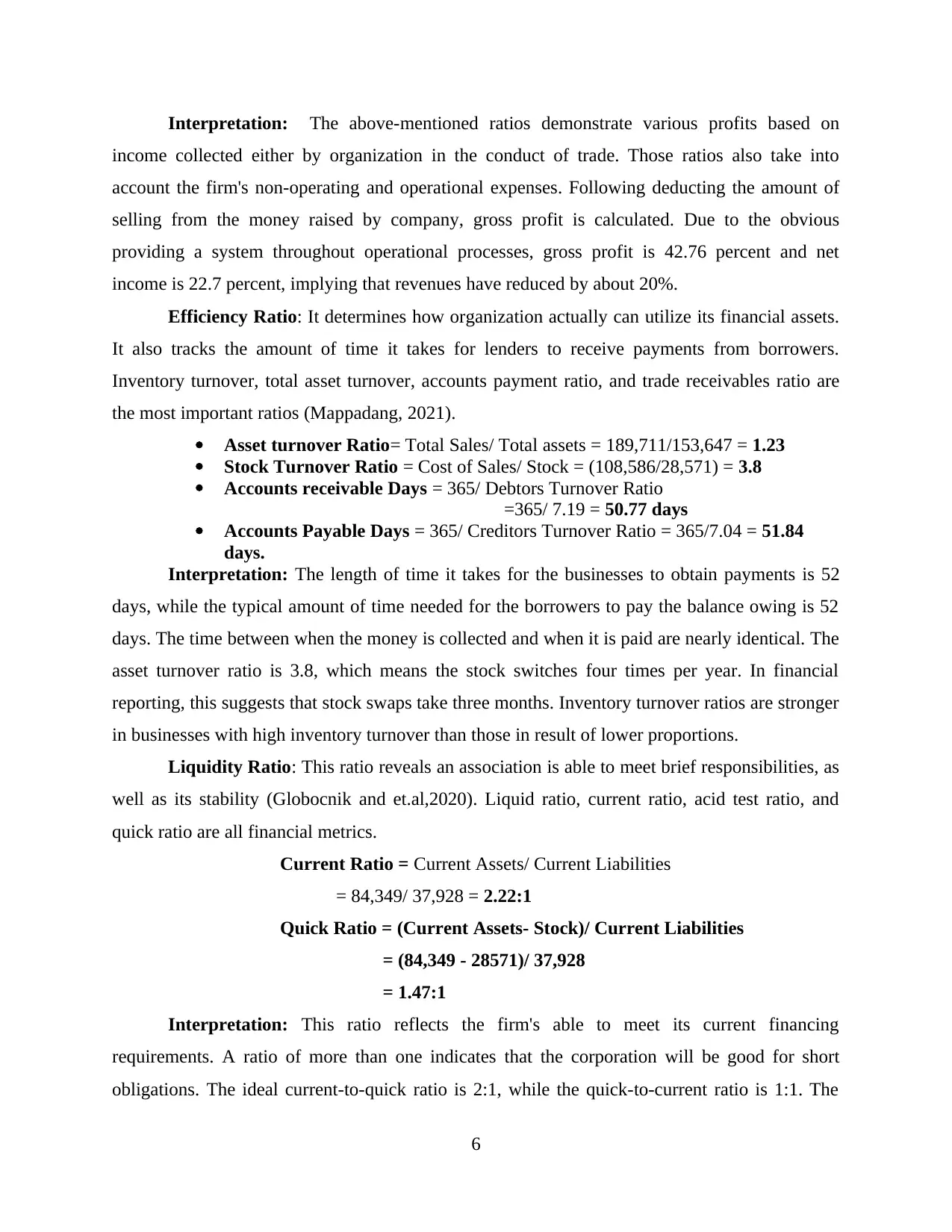
Interpretation: The above-mentioned ratios demonstrate various profits based on
income collected either by organization in the conduct of trade. Those ratios also take into
account the firm's non-operating and operational expenses. Following deducting the amount of
selling from the money raised by company, gross profit is calculated. Due to the obvious
providing a system throughout operational processes, gross profit is 42.76 percent and net
income is 22.7 percent, implying that revenues have reduced by about 20%.
Efficiency Ratio: It determines how organization actually can utilize its financial assets.
It also tracks the amount of time it takes for lenders to receive payments from borrowers.
Inventory turnover, total asset turnover, accounts payment ratio, and trade receivables ratio are
the most important ratios (Mappadang, 2021).
Asset turnover Ratio= Total Sales/ Total assets = 189,711/153,647 = 1.23
Stock Turnover Ratio = Cost of Sales/ Stock = (108,586/28,571) = 3.8
Accounts receivable Days = 365/ Debtors Turnover Ratio
=365/ 7.19 = 50.77 days
Accounts Payable Days = 365/ Creditors Turnover Ratio = 365/7.04 = 51.84
days.
Interpretation: The length of time it takes for the businesses to obtain payments is 52
days, while the typical amount of time needed for the borrowers to pay the balance owing is 52
days. The time between when the money is collected and when it is paid are nearly identical. The
asset turnover ratio is 3.8, which means the stock switches four times per year. In financial
reporting, this suggests that stock swaps take three months. Inventory turnover ratios are stronger
in businesses with high inventory turnover than those in result of lower proportions.
Liquidity Ratio: This ratio reveals an association is able to meet brief responsibilities, as
well as its stability (Globocnik and et.al,2020). Liquid ratio, current ratio, acid test ratio, and
quick ratio are all financial metrics.
Current Ratio = Current Assets/ Current Liabilities
= 84,349/ 37,928 = 2.22:1
Quick Ratio = (Current Assets- Stock)/ Current Liabilities
= (84,349 - 28571)/ 37,928
= 1.47:1
Interpretation: This ratio reflects the firm's able to meet its current financing
requirements. A ratio of more than one indicates that the corporation will be good for short
obligations. The ideal current-to-quick ratio is 2:1, while the quick-to-current ratio is 1:1. The
6
income collected either by organization in the conduct of trade. Those ratios also take into
account the firm's non-operating and operational expenses. Following deducting the amount of
selling from the money raised by company, gross profit is calculated. Due to the obvious
providing a system throughout operational processes, gross profit is 42.76 percent and net
income is 22.7 percent, implying that revenues have reduced by about 20%.
Efficiency Ratio: It determines how organization actually can utilize its financial assets.
It also tracks the amount of time it takes for lenders to receive payments from borrowers.
Inventory turnover, total asset turnover, accounts payment ratio, and trade receivables ratio are
the most important ratios (Mappadang, 2021).
Asset turnover Ratio= Total Sales/ Total assets = 189,711/153,647 = 1.23
Stock Turnover Ratio = Cost of Sales/ Stock = (108,586/28,571) = 3.8
Accounts receivable Days = 365/ Debtors Turnover Ratio
=365/ 7.19 = 50.77 days
Accounts Payable Days = 365/ Creditors Turnover Ratio = 365/7.04 = 51.84
days.
Interpretation: The length of time it takes for the businesses to obtain payments is 52
days, while the typical amount of time needed for the borrowers to pay the balance owing is 52
days. The time between when the money is collected and when it is paid are nearly identical. The
asset turnover ratio is 3.8, which means the stock switches four times per year. In financial
reporting, this suggests that stock swaps take three months. Inventory turnover ratios are stronger
in businesses with high inventory turnover than those in result of lower proportions.
Liquidity Ratio: This ratio reveals an association is able to meet brief responsibilities, as
well as its stability (Globocnik and et.al,2020). Liquid ratio, current ratio, acid test ratio, and
quick ratio are all financial metrics.
Current Ratio = Current Assets/ Current Liabilities
= 84,349/ 37,928 = 2.22:1
Quick Ratio = (Current Assets- Stock)/ Current Liabilities
= (84,349 - 28571)/ 37,928
= 1.47:1
Interpretation: This ratio reflects the firm's able to meet its current financing
requirements. A ratio of more than one indicates that the corporation will be good for short
obligations. The ideal current-to-quick ratio is 2:1, while the quick-to-current ratio is 1:1. The
6
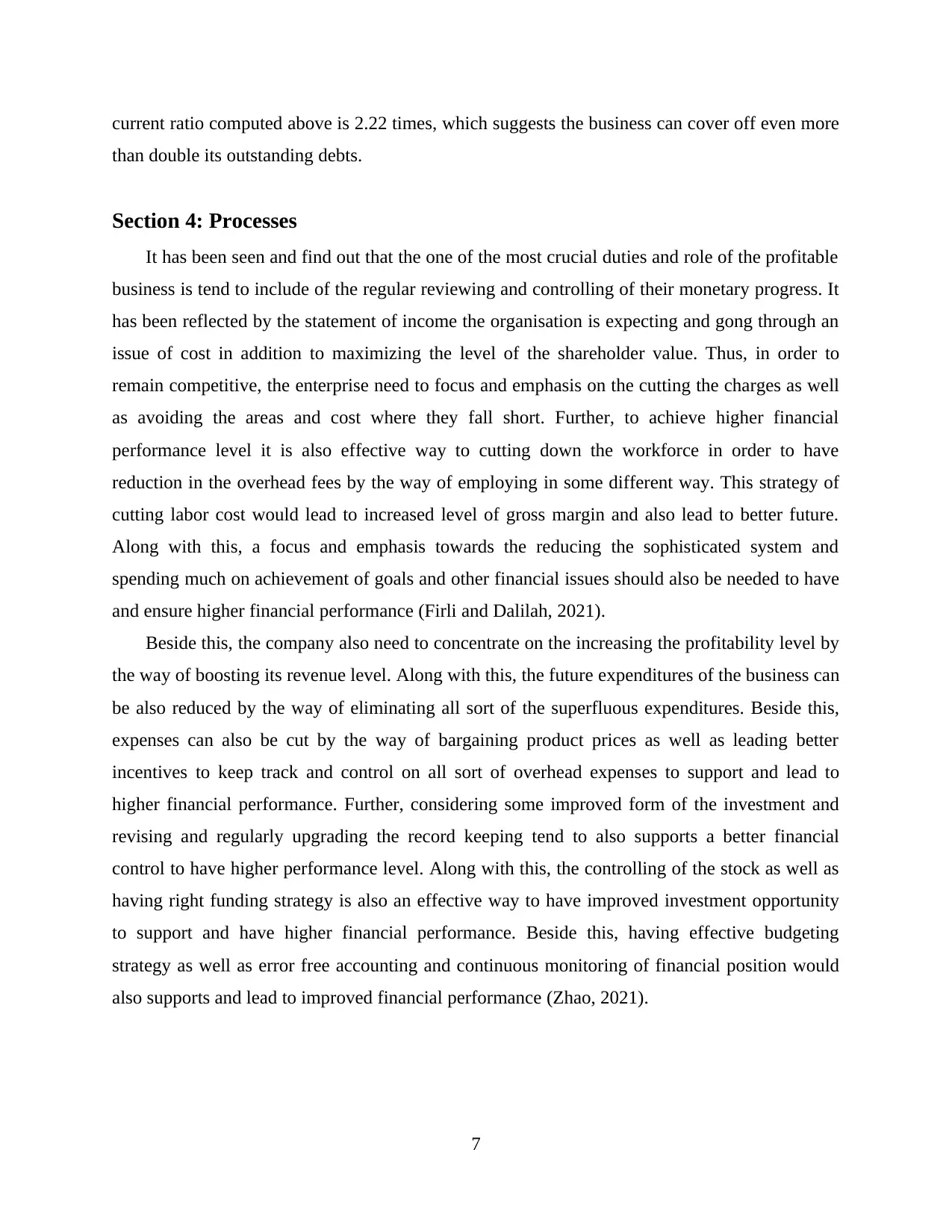
current ratio computed above is 2.22 times, which suggests the business can cover off even more
than double its outstanding debts.
Section 4: Processes
It has been seen and find out that the one of the most crucial duties and role of the profitable
business is tend to include of the regular reviewing and controlling of their monetary progress. It
has been reflected by the statement of income the organisation is expecting and gong through an
issue of cost in addition to maximizing the level of the shareholder value. Thus, in order to
remain competitive, the enterprise need to focus and emphasis on the cutting the charges as well
as avoiding the areas and cost where they fall short. Further, to achieve higher financial
performance level it is also effective way to cutting down the workforce in order to have
reduction in the overhead fees by the way of employing in some different way. This strategy of
cutting labor cost would lead to increased level of gross margin and also lead to better future.
Along with this, a focus and emphasis towards the reducing the sophisticated system and
spending much on achievement of goals and other financial issues should also be needed to have
and ensure higher financial performance (Firli and Dalilah, 2021).
Beside this, the company also need to concentrate on the increasing the profitability level by
the way of boosting its revenue level. Along with this, the future expenditures of the business can
be also reduced by the way of eliminating all sort of the superfluous expenditures. Beside this,
expenses can also be cut by the way of bargaining product prices as well as leading better
incentives to keep track and control on all sort of overhead expenses to support and lead to
higher financial performance. Further, considering some improved form of the investment and
revising and regularly upgrading the record keeping tend to also supports a better financial
control to have higher performance level. Along with this, the controlling of the stock as well as
having right funding strategy is also an effective way to have improved investment opportunity
to support and have higher financial performance. Beside this, having effective budgeting
strategy as well as error free accounting and continuous monitoring of financial position would
also supports and lead to improved financial performance (Zhao, 2021).
7
than double its outstanding debts.
Section 4: Processes
It has been seen and find out that the one of the most crucial duties and role of the profitable
business is tend to include of the regular reviewing and controlling of their monetary progress. It
has been reflected by the statement of income the organisation is expecting and gong through an
issue of cost in addition to maximizing the level of the shareholder value. Thus, in order to
remain competitive, the enterprise need to focus and emphasis on the cutting the charges as well
as avoiding the areas and cost where they fall short. Further, to achieve higher financial
performance level it is also effective way to cutting down the workforce in order to have
reduction in the overhead fees by the way of employing in some different way. This strategy of
cutting labor cost would lead to increased level of gross margin and also lead to better future.
Along with this, a focus and emphasis towards the reducing the sophisticated system and
spending much on achievement of goals and other financial issues should also be needed to have
and ensure higher financial performance (Firli and Dalilah, 2021).
Beside this, the company also need to concentrate on the increasing the profitability level by
the way of boosting its revenue level. Along with this, the future expenditures of the business can
be also reduced by the way of eliminating all sort of the superfluous expenditures. Beside this,
expenses can also be cut by the way of bargaining product prices as well as leading better
incentives to keep track and control on all sort of overhead expenses to support and lead to
higher financial performance. Further, considering some improved form of the investment and
revising and regularly upgrading the record keeping tend to also supports a better financial
control to have higher performance level. Along with this, the controlling of the stock as well as
having right funding strategy is also an effective way to have improved investment opportunity
to support and have higher financial performance. Beside this, having effective budgeting
strategy as well as error free accounting and continuous monitoring of financial position would
also supports and lead to improved financial performance (Zhao, 2021).
7
⊘ This is a preview!⊘
Do you want full access?
Subscribe today to unlock all pages.

Trusted by 1+ million students worldwide
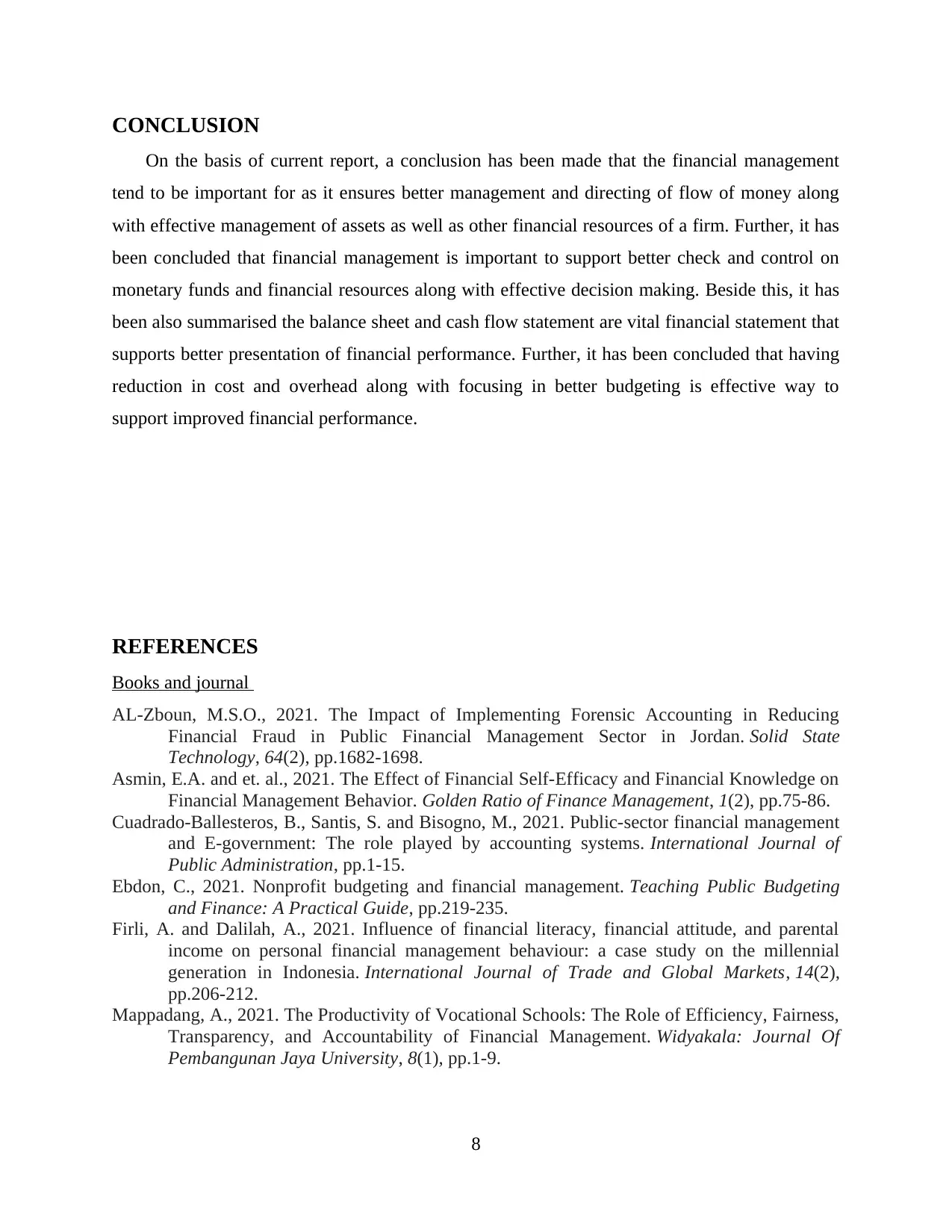
CONCLUSION
On the basis of current report, a conclusion has been made that the financial management
tend to be important for as it ensures better management and directing of flow of money along
with effective management of assets as well as other financial resources of a firm. Further, it has
been concluded that financial management is important to support better check and control on
monetary funds and financial resources along with effective decision making. Beside this, it has
been also summarised the balance sheet and cash flow statement are vital financial statement that
supports better presentation of financial performance. Further, it has been concluded that having
reduction in cost and overhead along with focusing in better budgeting is effective way to
support improved financial performance.
REFERENCES
Books and journal
AL-Zboun, M.S.O., 2021. The Impact of Implementing Forensic Accounting in Reducing
Financial Fraud in Public Financial Management Sector in Jordan. Solid State
Technology, 64(2), pp.1682-1698.
Asmin, E.A. and et. al., 2021. The Effect of Financial Self-Efficacy and Financial Knowledge on
Financial Management Behavior. Golden Ratio of Finance Management, 1(2), pp.75-86.
Cuadrado-Ballesteros, B., Santis, S. and Bisogno, M., 2021. Public-sector financial management
and E-government: The role played by accounting systems. International Journal of
Public Administration, pp.1-15.
Ebdon, C., 2021. Nonprofit budgeting and financial management. Teaching Public Budgeting
and Finance: A Practical Guide, pp.219-235.
Firli, A. and Dalilah, A., 2021. Influence of financial literacy, financial attitude, and parental
income on personal financial management behaviour: a case study on the millennial
generation in Indonesia. International Journal of Trade and Global Markets, 14(2),
pp.206-212.
Mappadang, A., 2021. The Productivity of Vocational Schools: The Role of Efficiency, Fairness,
Transparency, and Accountability of Financial Management. Widyakala: Journal Of
Pembangunan Jaya University, 8(1), pp.1-9.
8
On the basis of current report, a conclusion has been made that the financial management
tend to be important for as it ensures better management and directing of flow of money along
with effective management of assets as well as other financial resources of a firm. Further, it has
been concluded that financial management is important to support better check and control on
monetary funds and financial resources along with effective decision making. Beside this, it has
been also summarised the balance sheet and cash flow statement are vital financial statement that
supports better presentation of financial performance. Further, it has been concluded that having
reduction in cost and overhead along with focusing in better budgeting is effective way to
support improved financial performance.
REFERENCES
Books and journal
AL-Zboun, M.S.O., 2021. The Impact of Implementing Forensic Accounting in Reducing
Financial Fraud in Public Financial Management Sector in Jordan. Solid State
Technology, 64(2), pp.1682-1698.
Asmin, E.A. and et. al., 2021. The Effect of Financial Self-Efficacy and Financial Knowledge on
Financial Management Behavior. Golden Ratio of Finance Management, 1(2), pp.75-86.
Cuadrado-Ballesteros, B., Santis, S. and Bisogno, M., 2021. Public-sector financial management
and E-government: The role played by accounting systems. International Journal of
Public Administration, pp.1-15.
Ebdon, C., 2021. Nonprofit budgeting and financial management. Teaching Public Budgeting
and Finance: A Practical Guide, pp.219-235.
Firli, A. and Dalilah, A., 2021. Influence of financial literacy, financial attitude, and parental
income on personal financial management behaviour: a case study on the millennial
generation in Indonesia. International Journal of Trade and Global Markets, 14(2),
pp.206-212.
Mappadang, A., 2021. The Productivity of Vocational Schools: The Role of Efficiency, Fairness,
Transparency, and Accountability of Financial Management. Widyakala: Journal Of
Pembangunan Jaya University, 8(1), pp.1-9.
8
Paraphrase This Document
Need a fresh take? Get an instant paraphrase of this document with our AI Paraphraser
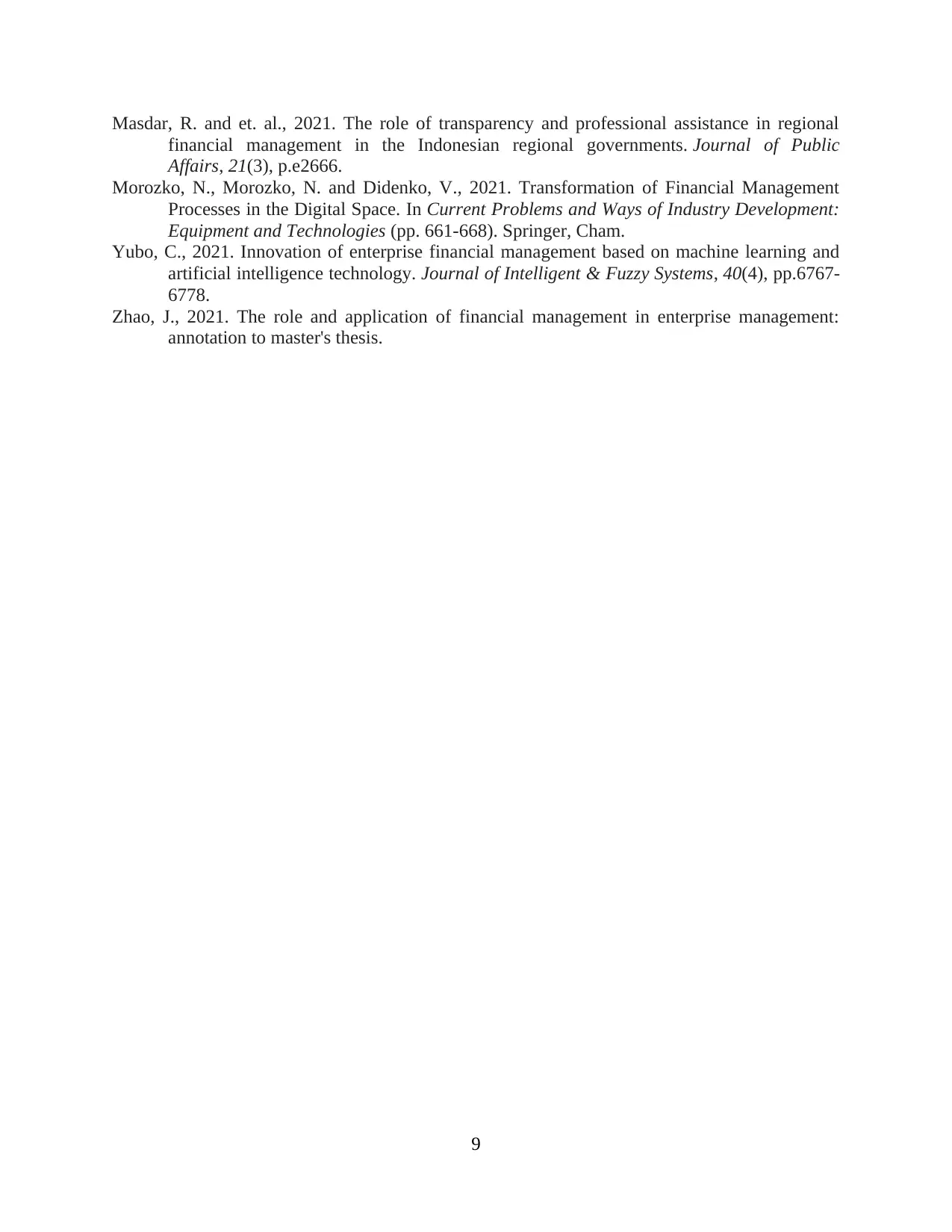
Masdar, R. and et. al., 2021. The role of transparency and professional assistance in regional
financial management in the Indonesian regional governments. Journal of Public
Affairs, 21(3), p.e2666.
Morozko, N., Morozko, N. and Didenko, V., 2021. Transformation of Financial Management
Processes in the Digital Space. In Current Problems and Ways of Industry Development:
Equipment and Technologies (pp. 661-668). Springer, Cham.
Yubo, C., 2021. Innovation of enterprise financial management based on machine learning and
artificial intelligence technology. Journal of Intelligent & Fuzzy Systems, 40(4), pp.6767-
6778.
Zhao, J., 2021. The role and application of financial management in enterprise management:
annotation to master's thesis.
9
financial management in the Indonesian regional governments. Journal of Public
Affairs, 21(3), p.e2666.
Morozko, N., Morozko, N. and Didenko, V., 2021. Transformation of Financial Management
Processes in the Digital Space. In Current Problems and Ways of Industry Development:
Equipment and Technologies (pp. 661-668). Springer, Cham.
Yubo, C., 2021. Innovation of enterprise financial management based on machine learning and
artificial intelligence technology. Journal of Intelligent & Fuzzy Systems, 40(4), pp.6767-
6778.
Zhao, J., 2021. The role and application of financial management in enterprise management:
annotation to master's thesis.
9
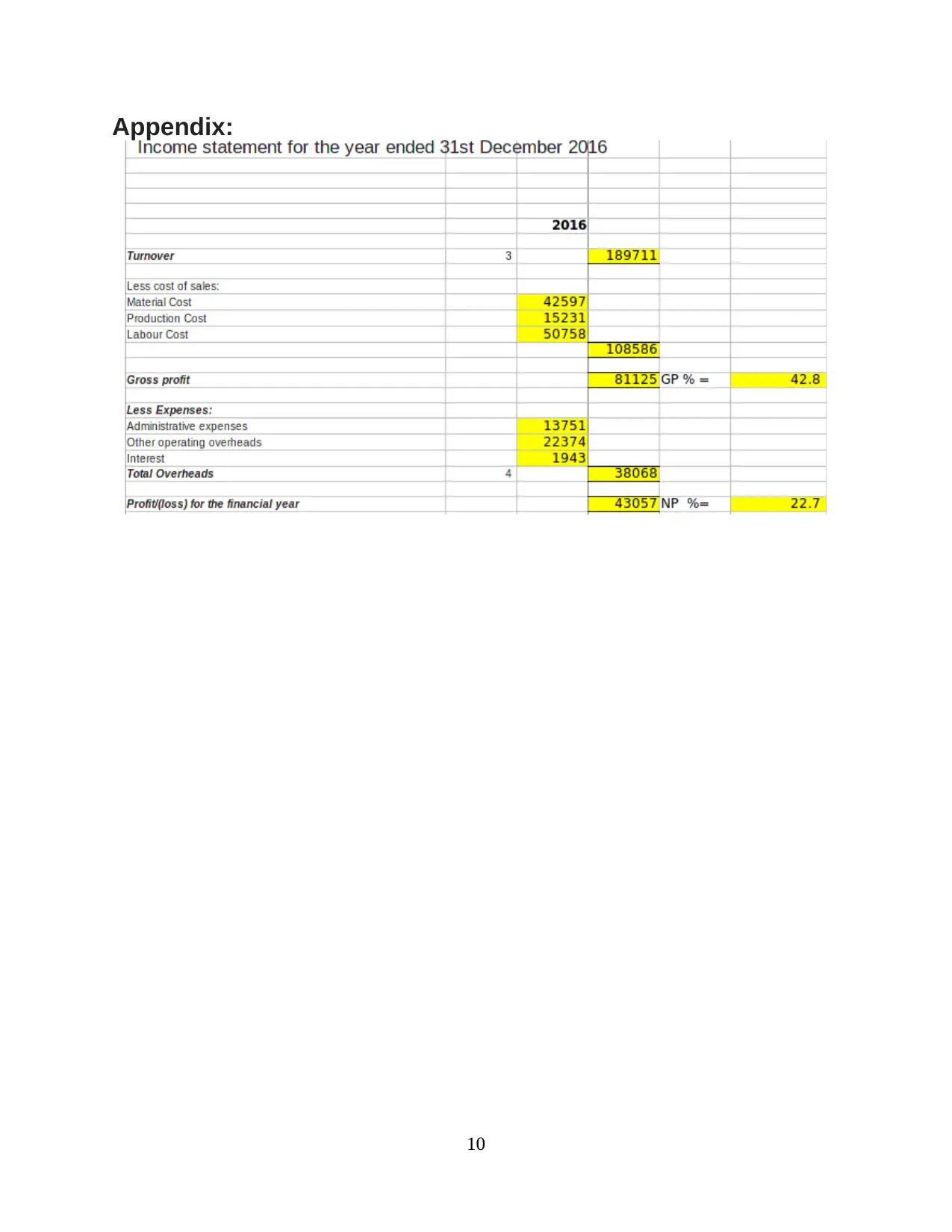
Appendix:
10
10
⊘ This is a preview!⊘
Do you want full access?
Subscribe today to unlock all pages.

Trusted by 1+ million students worldwide
1 out of 12
Related Documents
Your All-in-One AI-Powered Toolkit for Academic Success.
+13062052269
info@desklib.com
Available 24*7 on WhatsApp / Email
![[object Object]](/_next/static/media/star-bottom.7253800d.svg)
Unlock your academic potential
Copyright © 2020–2025 A2Z Services. All Rights Reserved. Developed and managed by ZUCOL.




